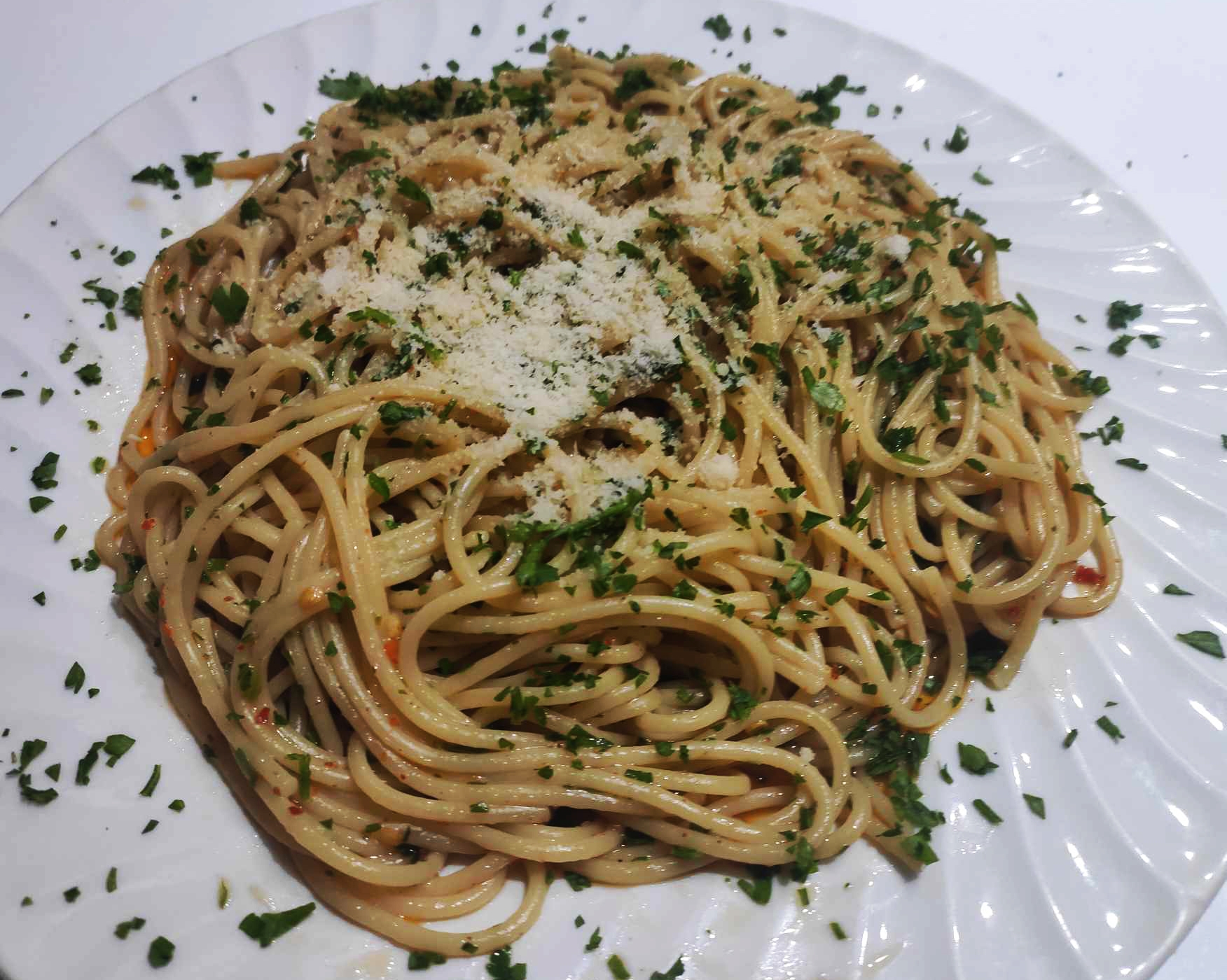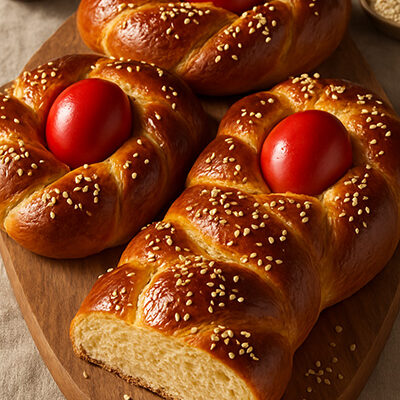Ciao, amici! Today, I’m thrilled to share with you one of Italy’s most cherished culinary treasures: Spaghetti Aglio e Olio.
This dish embodies the essence of Italian cuisine, simple yet bursting with flavor. With just a handful of ingredients and a little amore, you can create a dish that will transport your taste buds straight to the streets of Rome. This has to be among the first things that spring to me when I think of traditional Italian pasta recipes. One of the simplest and easiest pasta recipes is definitely spaghetti cooked with garlic, olive oil, either fresh or dried hot pepper flakes, and fresh parsley.
Here are the steps for making Spaghetti Aglio e Olio
- Bring a large pot of water to a boil. Salt the water well (about 1 tablespoon of salt). Peel and thinly slice 6 garlic cloves.
- Once the water is boiling, add the pasta and cook according to package instructions, minus 1 or 2 minutes before al dente. Before you drain the pasta, reserve 1 cup of the pasta’s cooking water.
- Once you start cooking the pasta, warm ½ cup of extra virgin olive oil in a large saute pan over medium heat. Add the garlic and stir until it’s just beginning to turn golden brown, about 2 minutes. Be sure to turn the heat down if necessary so that the garlic does not burn.
- When the garlic has just started to brown, add ½ teaspoon of red pepper flakes (if using) and toss for 30 seconds or so. If the pasta is not ready, remove the saute pan from the heat until the pasta is done.
- If you removed the pan from the heat, return it to medium heat once you’ve drained the cooked pasta. Whisk the reserved pasta water into the oil in the pan and bring to a simmer until the liquid reduces by about ⅓.
- Add the cooked pasta and stir until it’s nicely coated in the sauce and cooked to your liking. Turn the heat off.
- Add a handful of chopped parsley leaves. Toss once more to combine.
- Allow the pasta a couple of minutes to rest and absorb the sauce. Serve with parmesan cheese and red pepper flakes on the side.
Serve immediately. Top with additional parsley if desired. In Italy it’s apparently a sin to put cheese on this pasta dish. If served with cheese to an Italian they will call it Cacio e Pepe.
Parsley is a common ingredient in Italian dishes for several reasons
- Flavor: Parsley adds a fresh, herbaceous flavor to dishes. It has a slightly peppery taste that can complement other ingredients in Italian cuisine, such as tomatoes, garlic, and olive oil.
- Aesthetic: It serves as a garnish to enhance the visual appeal of dishes. Sprinkling chopped parsley on top of a pasta dish or risotto adds a vibrant green color that makes the dish more inviting.
- Versatility: Parsley is versatile and can be used in various Italian recipes, from sauces and soups to salads and main courses. Both flat-leaf (Italian) parsley and curly parsley are commonly used in Italian cooking.
- Cultural tradition: Parsley has been a part of Italian culinary tradition for centuries. It’s a staple herb in many Italian recipes, and its use has been passed down through generations.
Overall, parsley is valued in Italian cuisine for its flavor, versatility, nutritional benefits, and cultural significance. This recipe is enhanced greatly by the addition of parsley. Naturally, if you so choose, you are under no obligation to add it.
Do Chili and red pepper flakes have the same properties?
No, they are not interchangeable; each is created using a unique pepper. A variety of red peppers with varying degrees of heat are used to make red pepper flakes, unlike chili flakes, which are manufactured with chili peppers.
In summary chili and red pepper flakes are similar in that they both come from peppers. While chili and red pepper flakes both come from peppers and add heat to dishes, they differ in form, heat level, texture, and usage.
Which Spaghetti Is The Best To Use For Aglio e Olio
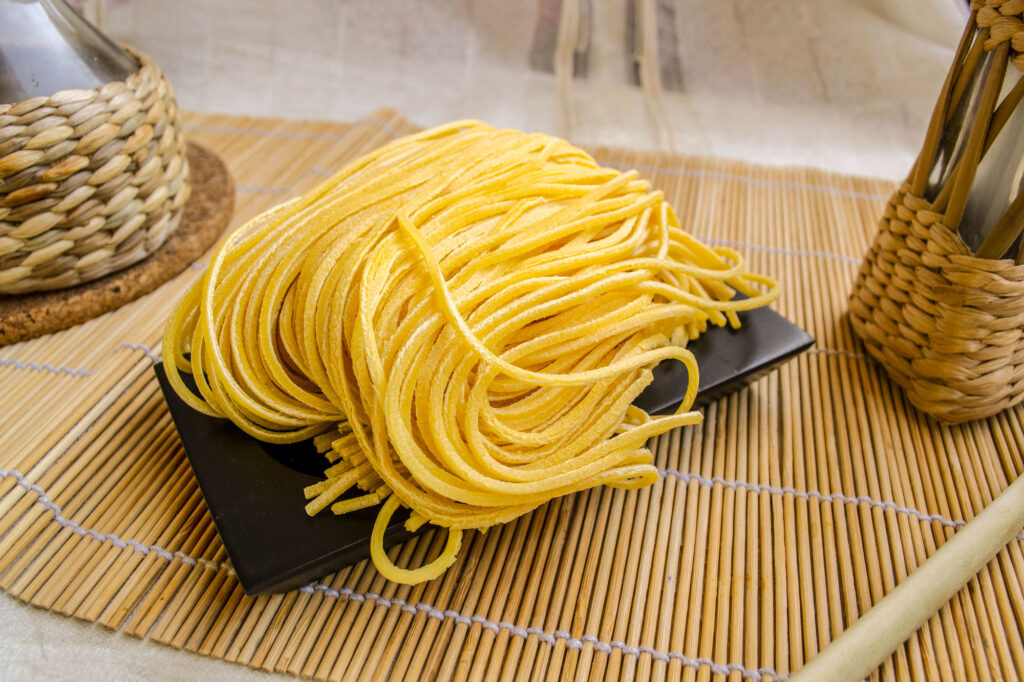
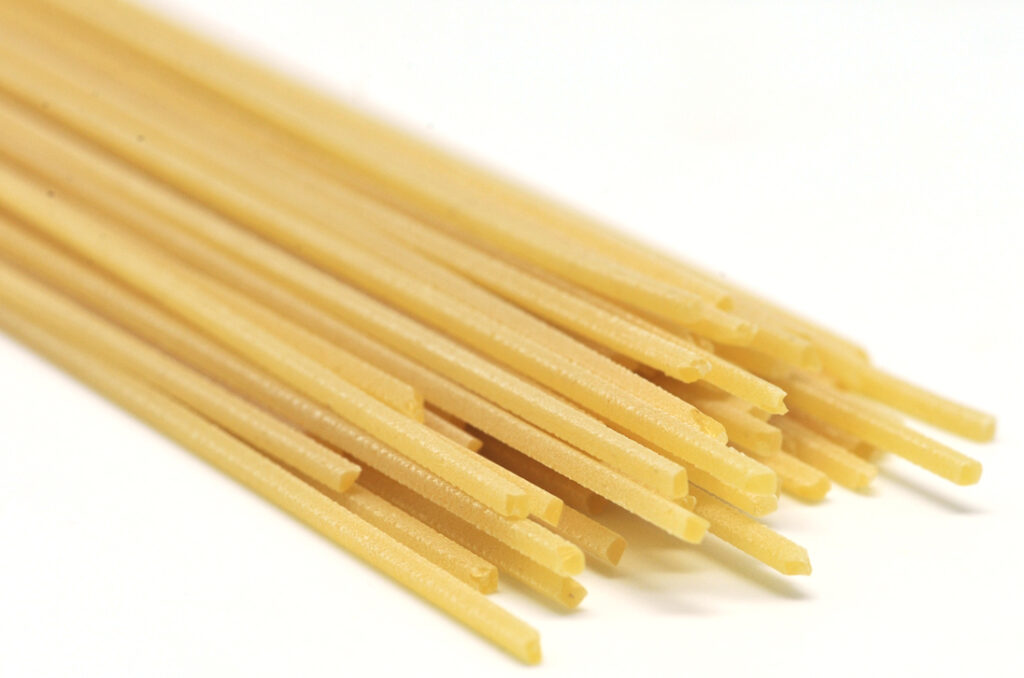
This is a traditional Italian meal that calls for spaghetti. I have never seen it served with any other pasta, like fettuccine or linguine. Make sure the pasta you use is of high quality, and verify the cooking time on the package. Make sure the pasta has a lot of starch. That’s what makes the sauce a lot thicker. My choice for this dish is Spaghetti alla Chitarra. Made from a wooden frame with strings stretched across, the chitarra resembles the strings of a guitar, giving the pasta its characteristic square edges as opposed to spaghetti’s long cylindrical shape.
And there you have it, amici! A foolproof recipe for aglio e olio that will have you feeling like a bona fide Italian chef in no time. Remember, simplicity is the ultimate sophistication when it comes to Italian cuisine. So gather your ingredients, channel your energies, and get ready to experience la dolce vita, one delicious bite at a time.
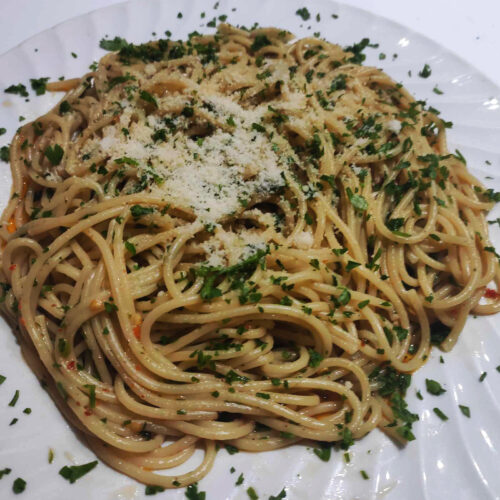
Aglio e Olio
Ingredients
- 1 pound 450g of spaghetti
- 6 cloves of garlic thinly sliced
- 1/2 cup 120ml of extra virgin olive oil
- 1 tsp red pepper flakes adjust to taste
- Salt to taste
- Freshly ground black pepper to taste
- 1/4 cup fresh parsley 15g finely chopped
- Grated Parmigiano-Reggiano cheese for serving (optional)
Instructions
Prepare the Pasta
- Bring a large pot of salted water to a boil. Cook the spaghetti according to the package instructions until a bit less than al dente. Remember, al dente is key for the perfect texture!
Infuse the Oil
- While the pasta is cooking, heat the olive oil in a large skillet over medium heat. Add the sliced garlic and red pepper flakes. Cook, stirring frequently, until the garlic is golden brown and fragrant, about 2-3 minutes. Be careful not to let the garlic burn, we want it to be golden and aromatic, not bitter!
Combine Pasta and Sauce
- Once the pasta is cooked, use tongs to transfer it directly from the pot to the skillet with the garlic oil. Toss the pasta gently to coat it evenly with the garlic-infused oil. If the pasta seems a little dry, you can add a splash of the pasta cooking water to loosen it up.
Season and Serve
- Season the aglio e olio with salt and freshly ground black pepper to taste. Sprinkle the chopped parsley over the top, and give everything one final toss to combine. Serve hot, garnished with grated Parmigiano-Reggiano cheese if desired.
- Buon Appetito! Gather your loved ones around the table, pour a glass of your favorite Italian vino, and savor every bite of this simple yet sublime dish. Buon appetito!

